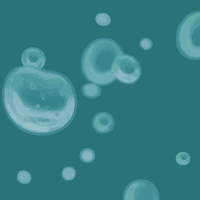Topic Menu
► Topic MenuTopic Editors




Hydrogel-Based Platforms for Advanced Therapy and Theranostics
Topic Information
Dear Colleagues,
Hydrogels are a class of materials that has attracted increasing interest in several biotechnological fields. Their physical similarity to tissues and versatility has provided a path for their widespread use in biomedical applications, ranging from tissue engineering to drug delivery. Recently, the combination with theranostic agents, composites, and other biomaterials (supramolecular or polymeric) has enabled further tuning of the gel’s properties and advancements toward smart multi-responsive and multifunctional materials. This Topic invites the research community within the biotechnological fields to contribute with their developments in advanced hydrogel-based therapeutic strategies. Original research articles, communications, and reviews are welcome, including those that advance systems which demonstrate an advantage over current hydrogel-based technologies and/or advance fundamental principles regarding the behavior, fabrication, or application of the materials. The systems can include biomaterials, carbonaceous materials, inorganic materials, as well as magnetic and/or plasmonic materials. We look forward to receiving your contributions.
Dr. Sérgio R. S. Veloso
Dr. Elisabete M. S. Castanheira
Dr. Valéria Gomes
Dr. Verónica Salgueiriño
Dr. Paula M. T. Ferreira
Dr. Miguel A. Correa-Duarte
Topic Editors
Keywords
- hydrogels
- self-assembly
- soft materials
- supramolecular gels
- polymeric gels
- composites
- tissue engineering
- wound dressing
- bioinks and bioprinting
- contrast agents
- multifunctional hydrogels
- drug delivery
- controlled release
- cancer therapy
- biodevices
- theranostic
Participating Journals
| Journal Name | Impact Factor | CiteScore | Launched Year | First Decision (median) | APC |
|---|---|---|---|---|---|

Biomedicines
|
3.9 | 6.8 | 2013 | 17 Days | CHF 2600 |

Gels
|
5.3 | 7.6 | 2015 | 12.5 Days | CHF 2100 |

Materials
|
3.2 | 6.4 | 2008 | 15.2 Days | CHF 2600 |

Micro
|
1.9 | 3.2 | 2021 | 28.1 Days | CHF 1200 |

Polymers
|
4.9 | 9.7 | 2009 | 14 Days | CHF 2700 |

Preprints.org is a multidisciplinary platform offering a preprint service designed to facilitate the early sharing of your research. It supports and empowers your research journey from the very beginning.
MDPI Topics is collaborating with Preprints.org and has established a direct connection between MDPI journals and the platform. Authors are encouraged to take advantage of this opportunity by posting their preprints at Preprints.org prior to publication:
- Share your research immediately: disseminate your ideas prior to publication and establish priority for your work.
- Safeguard your intellectual contribution: Protect your ideas with a time-stamped preprint that serves as proof of your research timeline.
- Boost visibility and impact: Increase the reach and influence of your research by making it accessible to a global audience.
- Gain early feedback: Receive valuable input and insights from peers before submitting to a journal.
- Ensure broad indexing: Web of Science (Preprint Citation Index), Google Scholar, Crossref, SHARE, PrePubMed, Scilit and Europe PMC.

